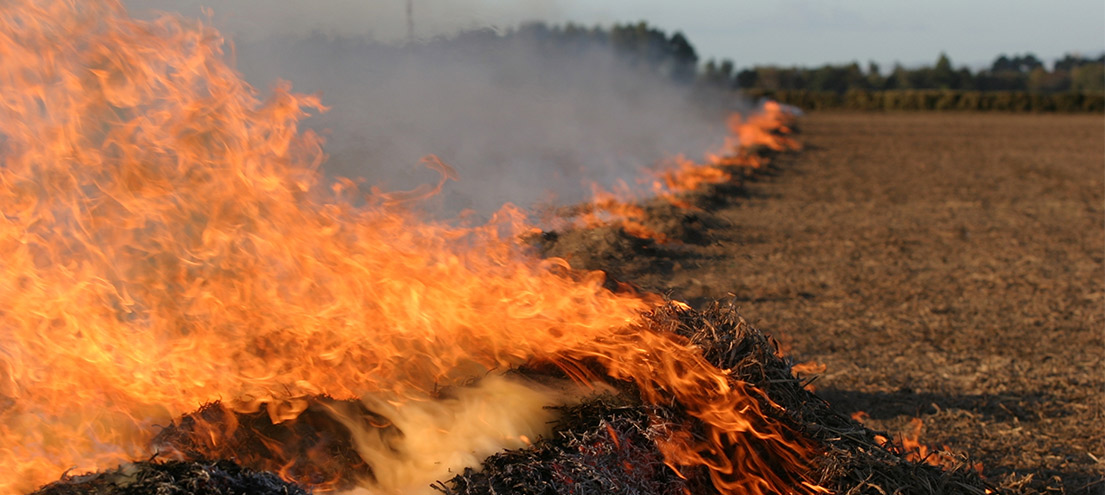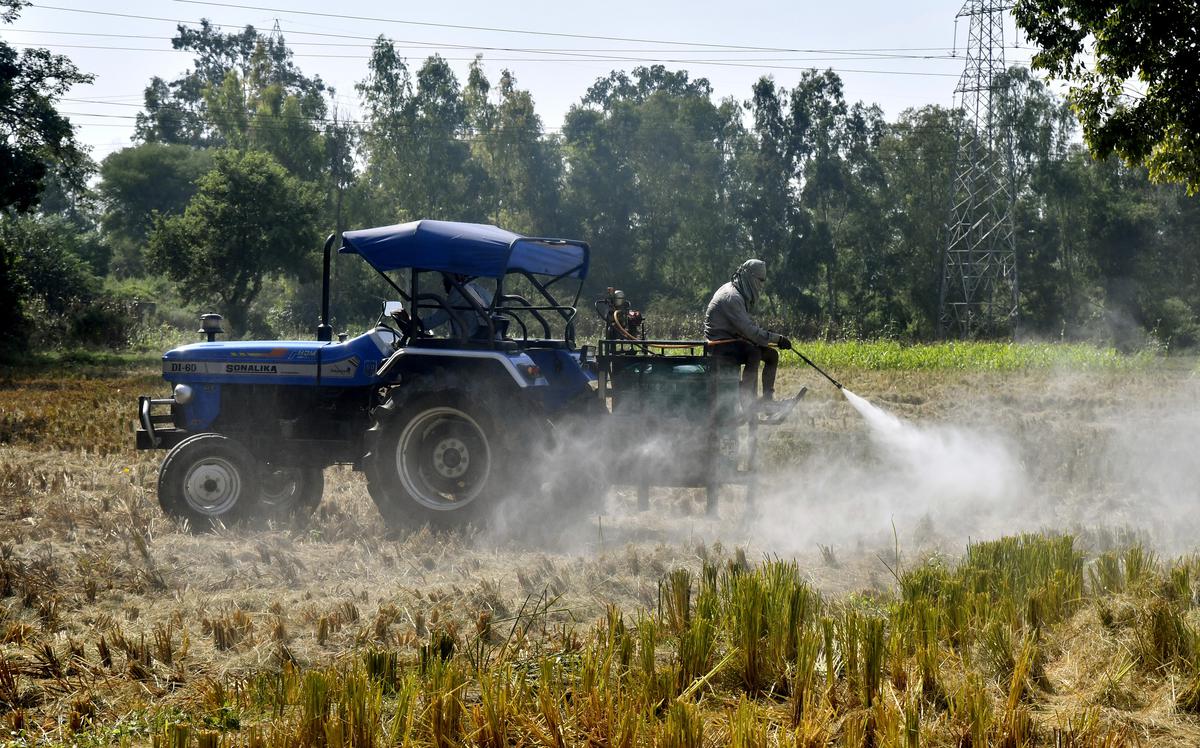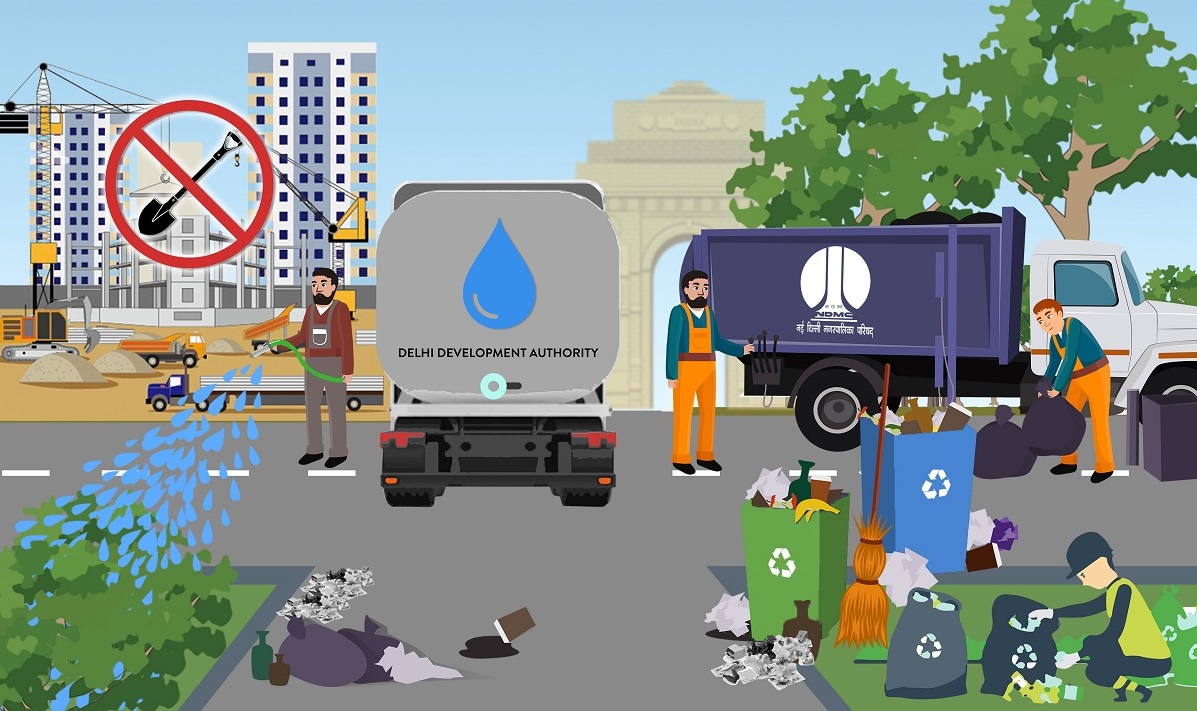As the Delhi government readies itself to spray bio-decomposers free of cost all over the paddy fields in the city yet again this year, AQI levels reach the severe category with the withdrawal of monsoons, all before winter arrives.
Stubble burning is the leading cause of life-threatening pollution in the National Capital Region, a method to get rid of paddy crop residue by burning the leftover stubble is practiced in parts of Uttar Pradesh, Haryana, and Punjab. Where once Delhi winters were romanticized in songs and couplets, the rising pollution problem had forced people to mask themselves way before covid began in the last few years.

The North Indian hybrid farming belt is where stubble burning is used mainly as a process, during winters, with a slow flow of the wind, setting of fog, bursting of firecrackers due to Diwali, vehicle emissions, and the post-harvest season clearing the field for new crop, all of these factors combined with worsening the air quality in the surrounding areas and Delhi is the worst affected by it.

To tackle the issues brought by stubble burning the Delhi government in 2021 adopted the Winter Action Plan which sought the usage of Bio Decomposer for stubble (Parali), an Anti-Dust Campaign, a Fine on Waste Burning, a Ban on Crackers, and set up Smog Towers.
Indian Council of Agricultural Research
The authorities claim that bio decomposers will be used for the third year now, every year witnessing positive results. The said bio decomposers also called the Pusa decomposers, developed by the Indian Council of Agricultural Research (ICAR) have been in effective use since 2020.

These decomposers when sprayed or used as capsules, 4 capsules can be implanted and would suffice for 1 hectare, i.e 5-6 tonnes of paddy residue within 25 days will disintegrate into fertilized soil. Whereas stubble burning can devoid the soil of required nutrients. In addition to retaining the manure, the amount of tilling or plowing needed to ready a field for the next crop reduces significantly.
With every passing year, Delhi winters have gone from being translucent to opaque what with the AQI levels and the smog, one wonders if the Winter Action Plan will ever fall into place. The 15 focus point Winter Action plan was recently upgraded and implemented as the Graded Response Action plan (GRAP) on the 6th of October.

In order to grapple with the multi-layered dangers of the rising pollution problem, the Central Pollution Control Board came up with laterally conducive measures to tackle the situation at every level. The plan is divided into four stages to deal with the varied levels of AQI, with different sets of steps to be followed according to the severity of the situation.
The revised GRAP holds promise as it deallocates and shifts responsibility on both the state and the citizen, a grade advisory has been issued for the public to strictly adhere to involving regular vehicle checks, ensuring PUC papers and waste management. GRAP is a consolidated effort of all state and central bodies working to curb pollution problems.
Diwali is in the offing and festivities are in order but amidst this hurrah, Delhi is in danger of getting clogged. I leave you with mindfulness that we all have to evoke when celebrating this year, I implore you to do your part in making this winter less choked.














